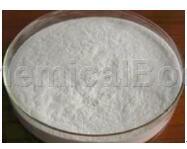Background and overview[1]
Hydroquinone monomethyl ether (also called p-hydroxyanisole, p-methoxyphenol, hydroquinone monomethyl ether) is not only an important intermediate for fine chemical products such as medicines, spices, and pesticides, but also can be used as Polymer polymerization inhibitors, antioxidants, plasticizers, etc., have a wide range of uses. The synthesis methods of hydroquinone monomethyl ether mainly include anisole method, hydroquinone method, and benzaldehyde method. The most widely used method at present is the hydroquinone method, which uses hydroquinone as raw material and dimethyl sulfate, methanol, dimethyl carbonate, etc. as methylating agents to synthesize hydroquinone monomethyl ether. The catalyst is generally Sulfuric acid, heteropoly acid, solid acid, strong acid resin, etc. The disadvantages of the process using dimethyl sulfate as the methylating agent are that dimethyl sulfate is highly toxic, smelly, and easily pollutes the environment, with low product yield, and has been gradually eliminated. Using sulfuric acid and heteropoly acids as catalysts not only pollutes the environment, but is also difficult to separate. The water generated by the reaction will greatly affect the activity of the catalyst.
Character

Application[2-4]
Application examples of hydroquinone monomethyl ether are as follows:
1) Prepare a polycarboxylic acid-based high-efficiency water-reducing agent. Use methoxy polyethylene glycol monomethyl ether and acrylic acid as raw materials to first synthesize the methoxy polyethylene glycol monomethyl ether acrylate macromonomer. , and then the esterified macromonomer is copolymerized with acrylic acid to form a polycarboxylic acid superplasticizer. In the synthesis of esterified macromonomer methoxy polyethylene glycol monomethyl ether acrylate, hydroquinone and hydroquinone monomethyl ether are used to synergistically inhibit the polymerization, which reduces the destruction rate of unsaturated double bonds, thus making the synthesis The effective content of water-reducing agent increases, which increases the water-reducing rate of concrete and enhances the slump-preserving performance.
2) Prepare lactic acid and acrylate. A process for producing acrylic acid ester in parallel with lactic acid production by fermentation, which is characterized in that it includes the following steps: 1) continuous elimination; 2) fermentation; 3) maturation reaction, sedimentation and purification; 4) filtration; 5) acidolysis and separation; 6) Primary concentration; 7) Decolorization and filtration; 8) Granular activated carbon and cation and anion exchange resin purification; 9) Secondary concentration; 10) Short-range molecular distillation: use the molecular distiller to separate 100% refined lactic acid and lactic acid residue; 11) Dehydration ; 12) Esterification: Distillation to obtain lactic acid ester; 13) In the dehydration reactor, first add a quarter of the effective volume of catalyst polyphosphoric acid, add lactic acid ester and polymerization inhibitor, and the polymerization inhibitor is terephthalene. Phenol monomethyl ether; microwave heating, start dehydration reaction at 140-350°C, fractionate to remove water, and receive the generated acrylate with a content greater than 99.5% and a total yield greater than 93%. The invention can produce acrylic acid ester in parallel during fermentation lactic acid production and has the characteristics of low cost.
3) Prepare a special material for UV-resistant communication optical cable sheathing tubes, which is made of the following raw materials by weight: bisphenol A polycarbonate 56-74, 2,2′,4,4′-tetrahydroxy Benzophenone 1-2, shea butter 5-8, zinc dihydrogen phosphate 9-16, acrylonitrile-butadiene-styrene terpolymer 24-38, methyl pentachlorostearate 4-8 , neodymium isooctanoate 2-3, titanium dioxide 10-15, 1,1,2,3,3,3-hexafluoro-1-propene, 1,1-difluoroethylene, tetrafluoroethylene copolymer 18-26 , Tris(n-butyl thioglycolate) antimony 2-4, behenic acid amide 3-6, organic bentonite 15-20, dimethyl methyl phosphonate 6-12, ammonium tetramolybdate 5-10, right Diphenol monomethyl ether 2-3, 2-phenylbenzimidazole-5-sulfonic acid 1.5-2.5, and additives 3-6. The special material for sheathing pipes of the present invention has excellent UV resistance, aging resistance and sunlight resistance. Irradiation performance, excellent mechanical properties and electrical insulation properties as well as good wear resistance, heat resistance and corrosion resistance can enable the optical cable sheathing tube to remain in the sun for a long time without fading, aging and cracking, extending its use life.
Preparation[1]
A method for synthesizing hydroquinone monomethyl ether, which solves the current problem of heavy pollution in the production process of hydroquinone monomethyl ether. There is no need to add initiator p-benzoquinone during the reaction process. Method for synthesizing hydroquinone monomethyl ether: using hydroquinone as raw material, methanol as methylating agent, and synthesizing hydroquinone monomethyl ether under the action of polyaniline-loaded catalyst, wherein methanol and hydroquinone The mass ratio of the catalyst to hydroquinone is 3-6:1, the mass ratio of the catalyst to hydroquinone is 0.1-0.4:1, the reaction temperature is 55-70°C, and the constant temperature reaction is carried out for 2-6 hours to obtain hydroquinone monomethyl ether.
Main reference materials
[1] CN201710954518.2 A method of synthesizing hydroquinone monomethyl ether
[2] CN200910116584.8 Preparation method of polycarboxylic acid-based high-efficiency water-reducing agent
[3] CN200710052843.6 Process for parallel production of acrylate in fermentation lactic acid production
[4] CN201410595976.8 A special material for ultraviolet resistant communication optical cable sheathing tube and its preparation method

 微信扫一扫打赏
微信扫一扫打赏

